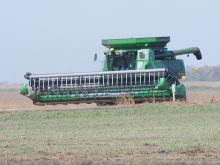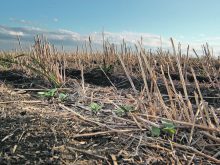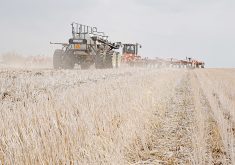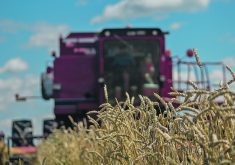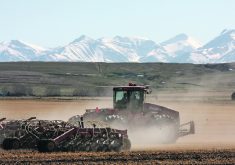The Manitoba Association of Watersheds is hammering out specifics for the next five years of Living Labs work.
On Nov. 15, Agriculture Canada announced Living Labs Manitoba.
It’s the successor to Living Labs Eastern Prairies, established as part of a multimillion-dollar commitment from the federal government in 2019. The idea was to provide common ground for researchers, farmers and other stakeholders to develop and test sustainable agriculture practices. The initiative was spearheaded by MAW and wrapped up this year.
The Nov. 15 announcement came with another $9.2 million in funding over the next five years. Living Labs Manitoba will also be administered by the watersheds association and “will develop and test BMPs (beneficial management practices) for nutrient management, natural and agricultural landscapes, water retention, agroforestry, crop and livestock integration, grazing management, rhizome microbiome, soil organic matter growth and soil health, as well as facilitating better use of resources,” according to an Agriculture Canada backgrounder.
Read Also

Huge Black Sea flax crop to provide stiff competition
Russia and Kazakhstan harvested huge flax crops and will be providing stiff competition in China and the EU.
“A key focus of these activities will be to bridge the gap between understanding and implementation.”
MAW executive director Lynda Nicol said the new Living Lab will build on its predecessor’s work, but at a different scope. It falls under another area of Agriculture Canada operations, Agricultural Climate Solutions Living Labs, which launched in 2022.
That overarching program “focuses on carbon sequestration, reducing greenhouse gas emissions and providing additional environmental co-benefits such as improving soil health and water quality, water conservation, increasing and protecting biodiversity and maximizing habitat capacity,” she said. “So, it’s a bit of a different focus.”
It will also span a wider region. Living Labs Easter Prairies focused on four areas: the Upper Oak Lake, Swan Lake, North Shannon Creek and Main Drain watersheds.
“This time through, we had really comprehensive proposal development sessions with our watershed districts and we’re hopeful to have projects throughout the province in as many watershed districts as possible,” Nicol said.
MAW is in the process of talking to farmers, industry, watershed districts and other stakeholders. Co-development sessions will be held across the province.
“Through those, we will identify interested landowners and work to develop the specific projects that will be implemented on their land,” Nicol said.
Interested producers should contact their local watershed district, she added. From there, they will be invited to a co-development event, where they can connect with researchers and industry supporters.






